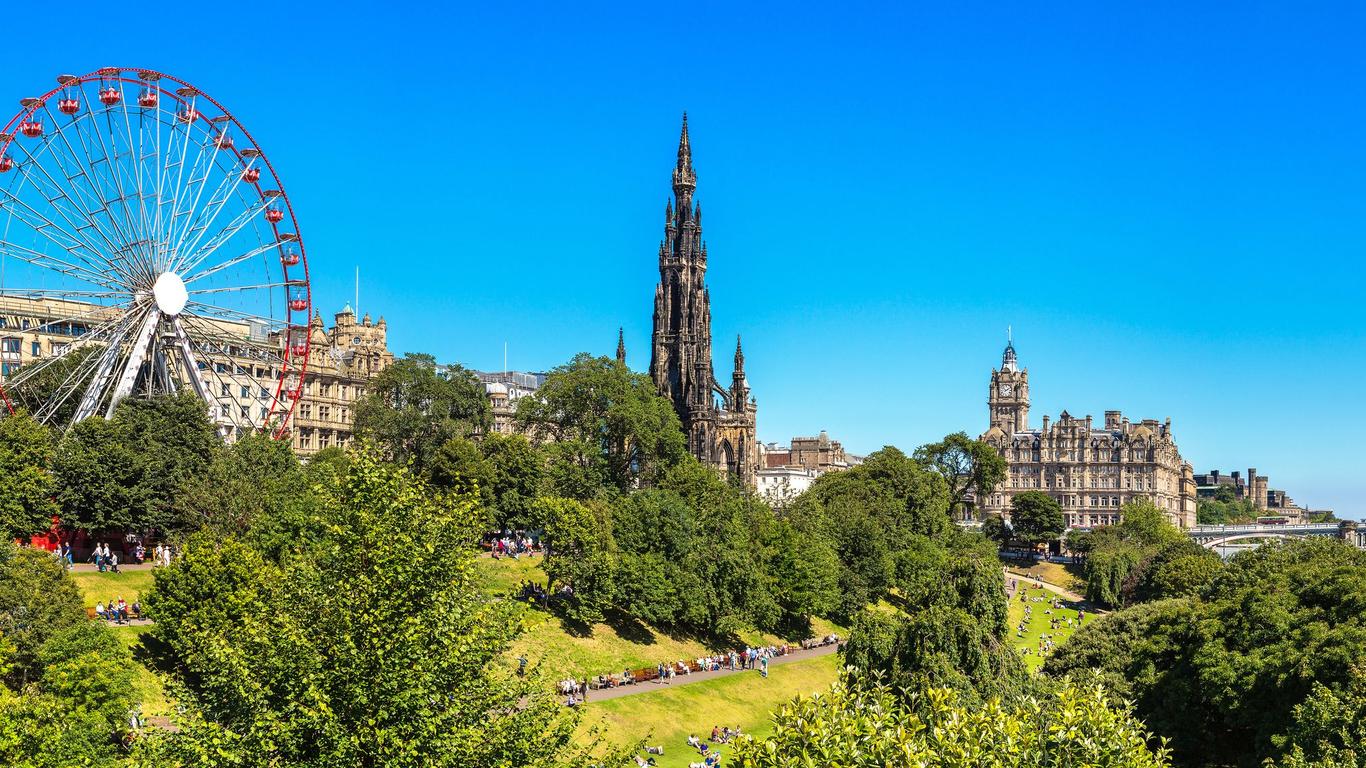Designated together with Edinburgh’s Old Town as a UNESCO World Heritage Site, the New Town sprawls across the centre of the Scottish capital. It was built between the mid-18th and 19th centuries and is renowned for its beautifully-preserved Neoclassical and Georgian architecture.
The Princes Street Gardens and Edinburgh Railway Station at Waverley Bridge separate the Old Town from the New Town to the north, with Princes Street being the area’s most famous boulevard. Its big name brand stores face The Mound on which Edinburgh Castle lies, alongside the Scottish National Gallery and Royal Scottish Academy which nestle at its base. The New Town’s streets are laid out in a grid pattern to the north of here, including the former financial district of George Street, and are interspersed with green spaces that include St Andrew Square and the expansive Queen Street Gardens. The Scottish National Portrait Gallery can also be found on Queen Street, with an outstanding collection of portraits depicting only Scots, as well as housing the Scottish National Photography Collection. While most of the New Town’s original architecture has been carefully maintained, its buildings now house chic new restaurants, innovative bars and designer retail shops. More modern additions to the area include the indoor shopping mall at St James Centre on the New Town’s eastern side and Princes Mall which sprawls around Waverley Station.
Edinburgh’s New Town is just a short walk from Waverley Station which lies along its southern edge, from where there are train connections across the United Kingdom. Public buses ply Princes Street and George Street, while trams run along St Andrew Street in the district’s east.
Overcrowding in Edinburgh’s Old Town during the late 17th century spurred the idea of constructing a New Town in the fields to the north of Nor Loch which originally defined the northern edge of the city. The wealthy moved into the spacious Georgian homes of this newly developed area, leaving the cramped conditions of the Old Town surrounding Edinburgh Castle to the poor.





